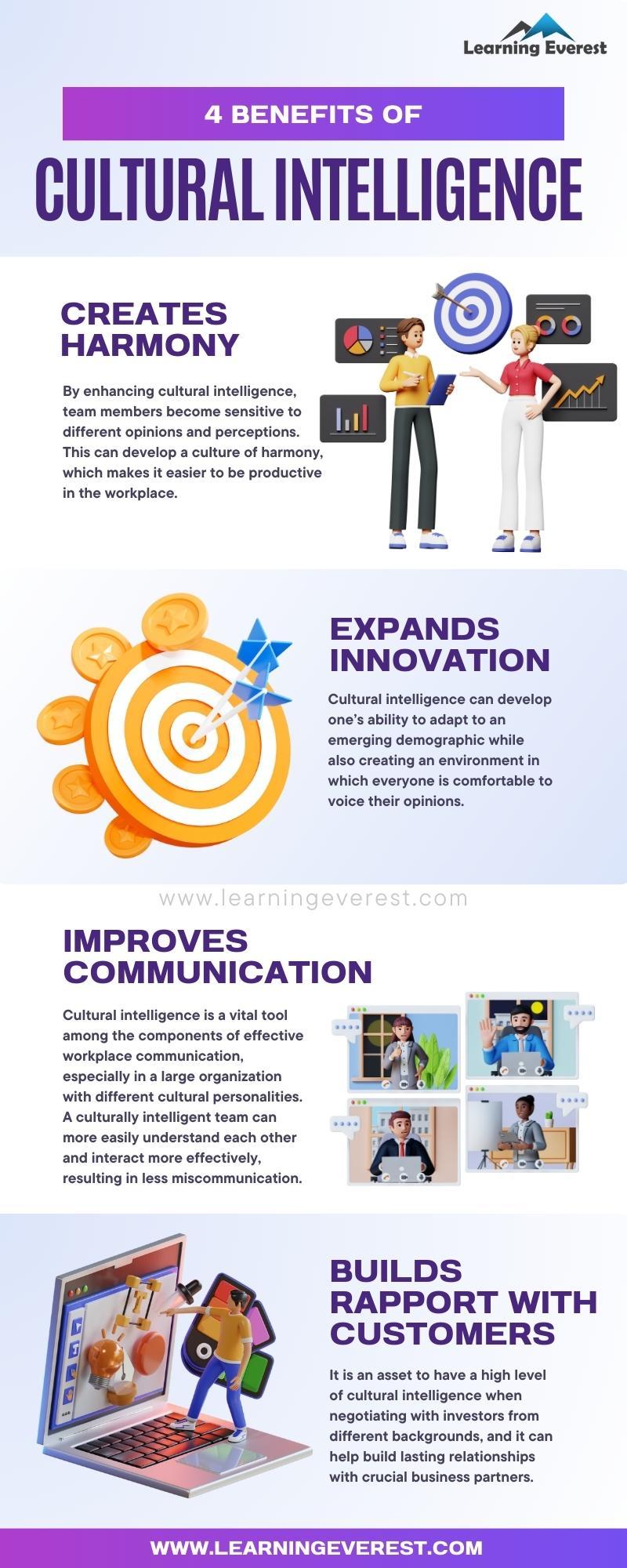Do you want to leverage eLearning in creating cultural intelligence? Then, you are in the right place. In this article, we discuss how eLearning can effectively foster cultural intelligence and create a more inclusive workplace.
Table of Contents
Role of eLearning in creating Cultural Intelligence in organization
Reduce triggers of differences
Visual cues (for example, language, race, religious dress, age, and gender) in face-to-face interactions can trigger unconscious biases, stereotypes, or negative emotions that can inhibit or disrupt open and honest communication. Virtual interaction diffuses the effects of visible triggers of difference. This increases openness to new perspectives, enhances willingness to share personal experiences, and supports greater risk-taking (for example, asking questions with respect to sensitive issues). Those outcomes enhance cultural learning.
Provide a safe learning environment
Online environments that have well-defined protocols for contributions and that are actively monitored by facilitators are safe learning environments.
Asynchronous learning
eLearning facilitates learning outside the constraints of time and place. Asynchronous learning can be particularly advantageous for employees for whom classroom discussions are conducted in a language other than their native tongue. These employees may find it challenging to keep up with the pace of classroom discussions. In linguistically diverse classrooms, virtual learning communities help to support equality and inclusion.
Promotes ongoing learning
eLearning provides a medium for ongoing, informal learning once formal training has ended. With evolving cultural dynamics and global trends, organizations can provide eLearning resources and modules to keep employees up-to-date with current cultural practices.
Caters diverse networks
Members of online learning communities can quickly connect with others who possess the cultural expertise or knowledge they require in order to solve their intercultural challenges or improve project outcomes. Cultural experts can also join learning communities. This opportunity to provide real-time expertise is limited in classroom-based training.
Drive innovation
Diverse eLearning communities provide access to a deep repository of new ideas and resources that learners can tap into, synthesize, and integrate to drive innovation. Online communities can be far more diverse and global than would ever be possible in a classroom setting. They provide access to a richer collection of differing and often conflicting perspectives and are, therefore, more representative of global cultural complexity.
Gives social support
eLearning communities act as a nexus of social support. Members share their frustrations, challenges, and learnings. This can help buffer stress and exhaustion when dealing with cultures.
At Learning Everest, we can help you identify and develop a culturally intelligent eLearning, especially for your organization.
Need to know more? Drop us a comment below.
Infographic
Frequently Asked Questions (FAQs)
What is cultural intelligence?
Cultural intelligence is the ability to relate to people with culturally diverse backdrops and interact with them properly. It is important for effective workplace communication, especially in a large organization with different cultural personalities.
What are the three elements of cultural intelligence?
There are three primary components to cultural intelligence: Cognitive skills, Physical cues, and Emotional understanding.
What are the benefits of cultural diversity?
Different cultural perspectives can inspire creativity and drive innovation in the workplace. A variety of viewpoints, with the wide-ranging personal and professional experiences of a diverse team, can offer new perspectives to see the workplace and the world differently.






